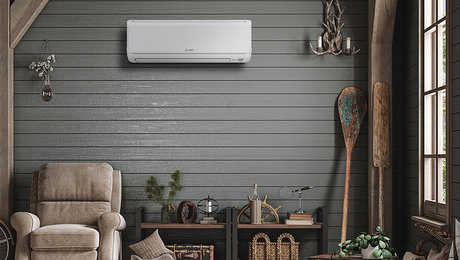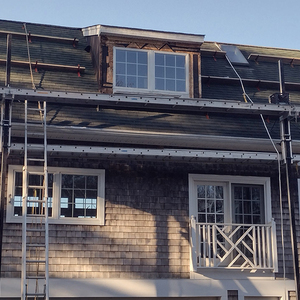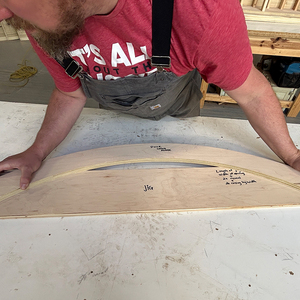What does this mean?
I had to tighten the wires for an outlet in the bathroom. The outlet and overhead light are on the same wire. I went down stairs and started flipping breakers. I flipped them all off twice, and the light never went off.
I ended up turning the main breaker switch to turn the light/outlet off. Where is the wire connected if it’s not controlled by any of the breakers?
Jason



















Replies
Sub panel?
The only panel in the house is the 200amp panel in the basement. There is a subpanel in the detached garage/workshop, but it has a 90amp breaker at the main panel. That also was switched off when I tried finding the breaker for the bathroom light/outlet.I should add that the 200amp panel replaced the original wiring in the 1990s. The house has a mix of new wiring from this update and the orignal 1930 wiring. Could this light switch someone have been connected directly to a "hot" part of the panel without connecting to a breaker during this conversion?Jason
Dan might be right about the cross connected breakers. Turn off all the breakers except the main and the light should be off. If so, keep turning on breakers till you have light. Then turn off the breaker and see if another breaker turns it on again. If so, you really have a problem.
If the light stays on with all the breakers off, I'd check for voltage at all the breakers to see if one has fused contacts.
Edited 8/13/2007 3:20 pm ET by MarkH
Is this a problem as in a dangerous fire hazzard, or is it a problem because it is a pain in the butt to identify and fix?Jason
It's a fire hazard. Needs fixed.
It's not by itself (necessarily) a significant fire hazard. It is a hazard to those working on the circuits, of course, and COULD be a fire hazard under the right (wrong) set of circumstances, but it's not the type of thing that you need to get fixed yesterday. (After all, it's presumably been like this for twelve years, and no fire so far.)More significant is the question of whether this is an isolated problem or symptomatic of more serious generic problems. Getting two circuits wired accidentally together in an old house like this is not that unusual, but if it appears to have been done intentionally then there's no telling what else is wrong.In the interim, though, you'd be well-advised to not add to that circuit in any way.
So convenient a thing it is to be a reasonable Creature, since it enables one to find or make a Reason for everything one has a mind to do. --Benjamin Franklin
Three possibilities:
1) The circuit is connected to a subpanel you're unaware of.
2) The circuit is (very bogusly) connected directly to the main breaker (though possibly through a fuse block hiddens somewhere).
3) (Most likely) Two breakers have been connected together by some wiring misadventure, so you have to turn both of them off simultaneously to disconnect the circuit.
How old is the house? All of the above are more likely in a house that was originally knob-and-tube, or which originally had a tiny fusebox.
The house was built in 1930. Much of the original wiring is still being used and the house was switched from a fuse box about 1995.Jason
Yeah, potential for a multitude of sins, especially if converted that late. Likely there have been a dozen or so different "enhancements" of the system, some by folks who could find their *ss, and some that couldn't.
So convenient a thing it is to be a reasonable Creature, since it enables one to find or make a Reason for everything one has a mind to do. --Benjamin Franklin
4) The breaker for this circuit is broken and doesn't actually disconnect the current when tripped.George Patterson
Yeah, a possibility, but you'd likely notice that the breaker didn't feel right.
So convenient a thing it is to be a reasonable Creature, since it enables one to find or make a Reason for everything one has a mind to do. --Benjamin Franklin
Thank you - I will give it a try on Friday. I have no interest in getting inside the panel - whatever I find, I will leave it to an electrician to correct.Jason
If it is two breakers connected together, it would be wisest to leave on of them off. And, of course, tape a note to the panel door about the situation.
So convenient a thing it is to be a reasonable Creature, since it enables one to find or make a Reason for everything one has a mind to do. --Benjamin Franklin
Considering the amount of time and effort it'll take to track down which breakers are involved, it would be wiser not to piecemeal this fix, but rather to map out the whole system. It's a pretty good bet that this isn't the only electrical issue you'll ever have.
Get some masking tape or white paper tape, and a sharpie. Put a little tab of tape on the plate for every switch, every outlet, every bulit-in electrical thing. Use the sharpie to number all your branch circuit breakers from top to bottom.
Bright and early in the morning, turn off all the breakers. Check and see if there's anything still on, which would be due to a bad breaker or something wired ahead of them. Mark such items with an X. Then turn breaker #1 on. Go thru the house with a test light and sharpie, and put the number 1 on the tape on everything that's working. Then go back to the panel, turn 1 off and 2 on, go back thru numbering all the circuit #2 stuff, and so forth for all the breakers. It's not that much more effort than tracking down which breaker(s) are involved in the cross connect, and it'll save your electrician some time and you some money.
Draw a rough floorplan of the house, with each electrical item and its circuit number on it. Keep this in the breaker panel, in a plastic bag if it's outside, and you'll never have to mess with trying breakers again.
-- J.S.
Edited 8/14/2007 2:01 pm ET by JohnSprungX
on the tape on everything that's working
And when you find a breaker that doesn't "do" anything (you will)--remember to go check in the garage, the attic, the basement, and the bathroom lights and fans.
Not that I'd miss anything so obvious more than, oh, 10-12 times <sigh>.
With older houses, be prepared to circle the entire house twice per c/b, too <weary sigh>. (Home run? This' 'lectricity, t'ain't baseball!)Occupational hazard of my occupation not being around (sorry Bubba)
I think both DanH and MarkH are on the right track - interconnected circuit somewhere.
I would turn the light on, turn off all of the breakers in your 200A box except the main. Light off? interconnected circuits somewhere.
Light still on? Turn off main - if light goes off, there is a direct connection somewhere to the main - not good as that means the 15 or 20A light circuit is being "protected" by the 200A main breaker - this is pretty unlikely, but possible.
Interconnected circuits from above test? 1) Like someone else said, start with all of the breakers off, main on; start turning breakers on and leave them on until the light goes on. Stop as soon as the light comes on. Mark this breaker which made the light come on for reference later - we will call it breaker "A". Turn all of the other breakers off and be sure the light stays on with only breaker "A" turned on. Turn breaker "A" on and off a few times and make sure that it will indeed turn the light on and off.
All we know at this point is that breaker "A" is involved.
Turn breaker "A" off - light should go off.
Start turning the remaining breakers on - if the light comes on when any of these breakers are turned on then that is the interconnected circuit - call this additional breaker "B". (could get worse there could be a C, D, etc.)
Turn breaker "B" on and off a few times to be sure the light goes on and off.
"A" and "B" are interconnected somewhere. Turning off "A and "B" at the same time will turn the light off along with some additional lights and outlets in the house. The interconnection happens somewhere in the boxes associated with the "dead zone" created by turning A and B off at the same time - happy hunting!
>>The outlet and overhead light are on the same wire<< Are you sure? You probably are - just investigating the possibility of the light being controlled by a switch leg powered by a different breaker. If yes, ignore this comment.
If the light never goes out when all of the breakers are turned off (except the main): The controlling breaker in your main panel for this circuit probably has fused contacts and although the breaker seems to turn on and off, the circuit is never broken.
To check for fused contacts in a breaker: turn all individual breakers off, remove main panel cover and check each breaker connection screw with a volt meter - all should be dead - if you find one that is showing 120V or so in the off position - that is the culprit - bad breaker - replace.
Alternate test technique for interconnected circuits: If you are comfortable working inside of the service panel and working alone: Turn off all breakers in panel including the main, run continuity test between each breaker and all others in box - continuity between 2 breakers = interconnected circuits.
If you have a helper to yell to you when the light goes off, it is probably faster to use the "flip breakers and helper yells when the light goes on or off" technique. I also like the "long extension cord from the outlet-in-question to a drop light which I can see" technique - cheaper than helper and always available.
Advice - turn off computers before doing any of the above.
Good luck!
Jim
Never underestimate the value of a sharp pencil or good light.
Another technique I've used when hunting out circuits is a corded radio plugged in and turned up loud.
So convenient a thing it is to be a reasonable Creature, since it enables one to find or make a Reason for everything one has a mind to do. --Benjamin Franklin
>> corded radio turned up loud<<
Yep, that trick works provided your job site radio switch is configured right.
Does not work in my case since my radio turns off when power is disconnected -- have to have a live power source for the switch to work. My radio will tell me when power stops but not when it is restarted - unless I push the on button!
Jim
Never underestimate the value of a sharp pencil or good light.